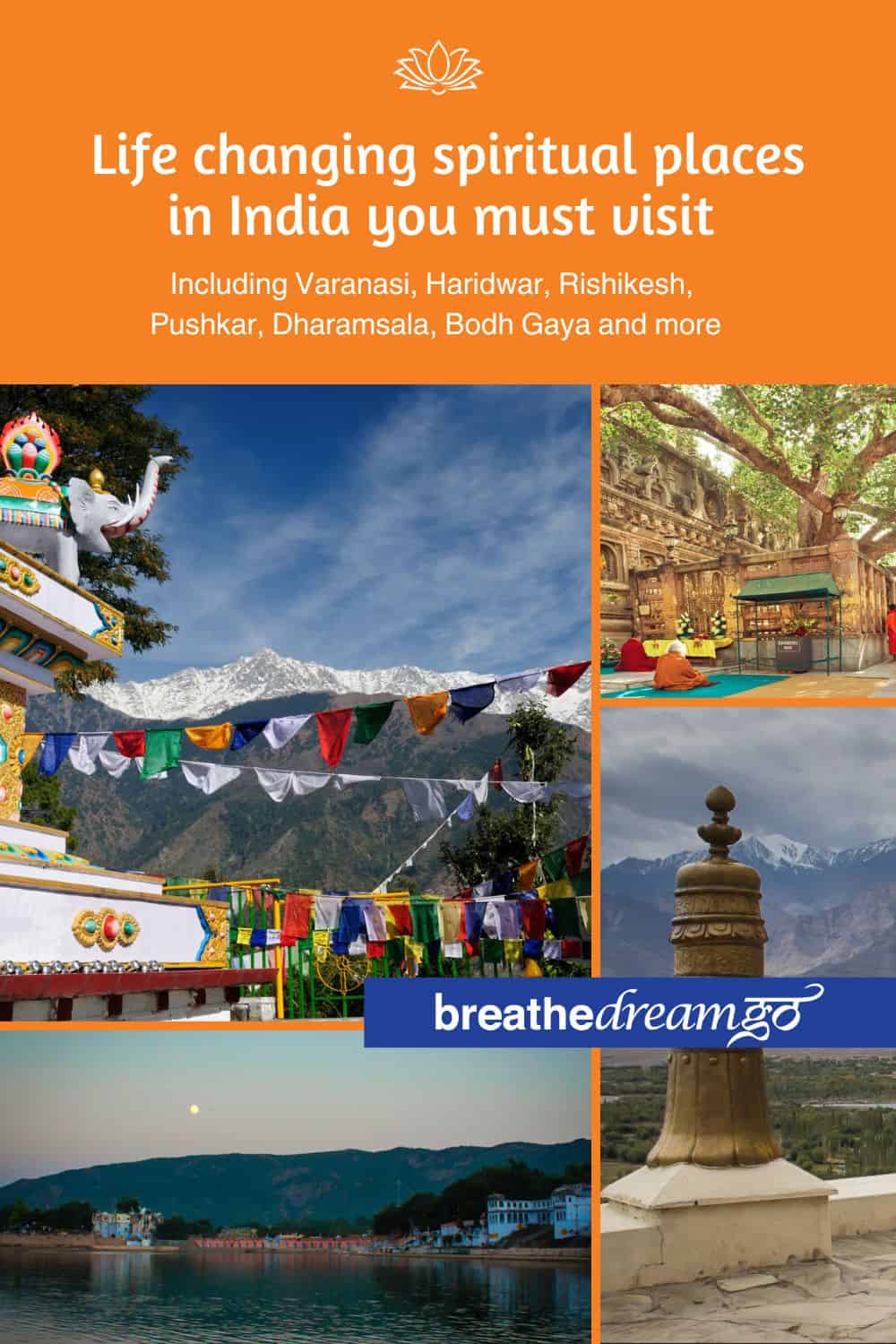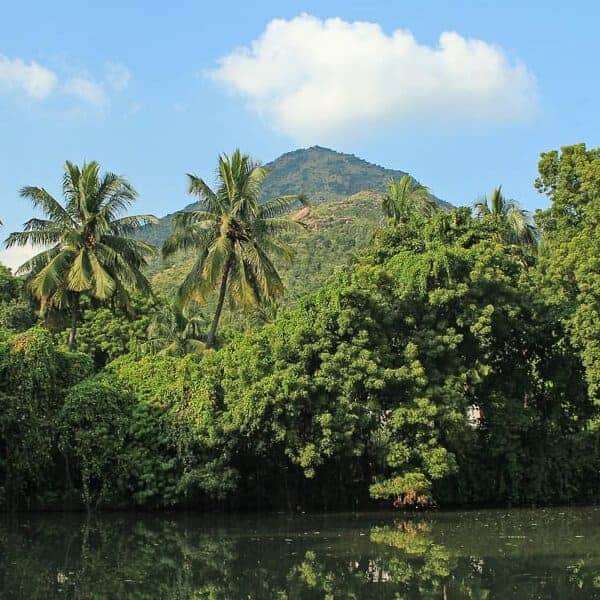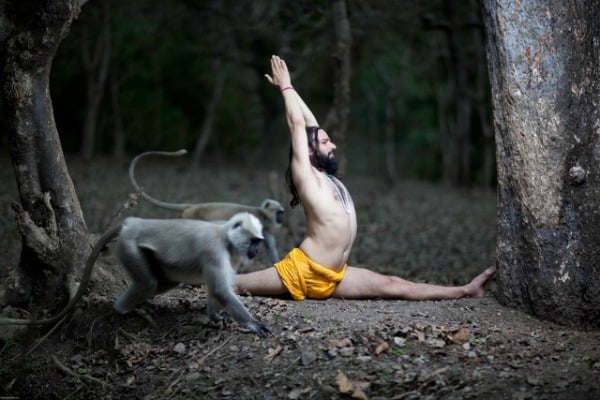Table of Contents
Top spiritual places in India for foreign tourists and seekers
India is considered one of the most spiritual places on earth. The birthplace of Yoga, and several major religions including Hinduism, Buddhism, and Sikhism, India has been a magnet for spiritual seekers for centuries. Steve Jobs went to India. The Beatles went to India. Mark Twain went to India. There’s even some evidence that Jesus went to India.
The idea of going on a spiritual quest or journey of self-discovery isn’t new. “Know thyself” was carved above the entrance to the Delphi Oracle in ancient Greece. The spiritual quest has a long history and is highly respected. Many of the authors of the books on my 20 Favourite Spiritual Books list visited India (Somerset Maugham) or wrote about India (Herman Hesse).
In more recent history, since the 1960s, Yoga and meditation have become popular throughout the world – and many of these spiritual practitioners have been drawn to India for deeper study. The Beatles visit to the formerly small town of Rishikesh in 1968 ignited a lot of interest in pursuing spiritual studies and visiting spiritual places in India. The Beatles Ashram is now a kind of pilgrimage site and tourist attraction. Yoga’s sister science Ayurveda has become popular too; this is my vote for the best Ayurveda retreat in India.
India is alive with spiritual traditions representing just about every major religion on earth. There are Indian festivals just about every day, many holy cities, and pilgrimage sites and routes all across the country, far too many to count. From a certain perspective, every place in India is sacred. I’s not easy to choose just a few spiritual places in India, so I focused on the places that are more well-known to foreigners.
Plan your spiritual journey with us
Let India for Beginners custom tours take you on a spiritual journey. We can plan a custom trip to India based on your interests and budget. We know spiritual India well and can take you to places that vibrate with sanctity. Start your journey now!
Learn MoreVaranasi
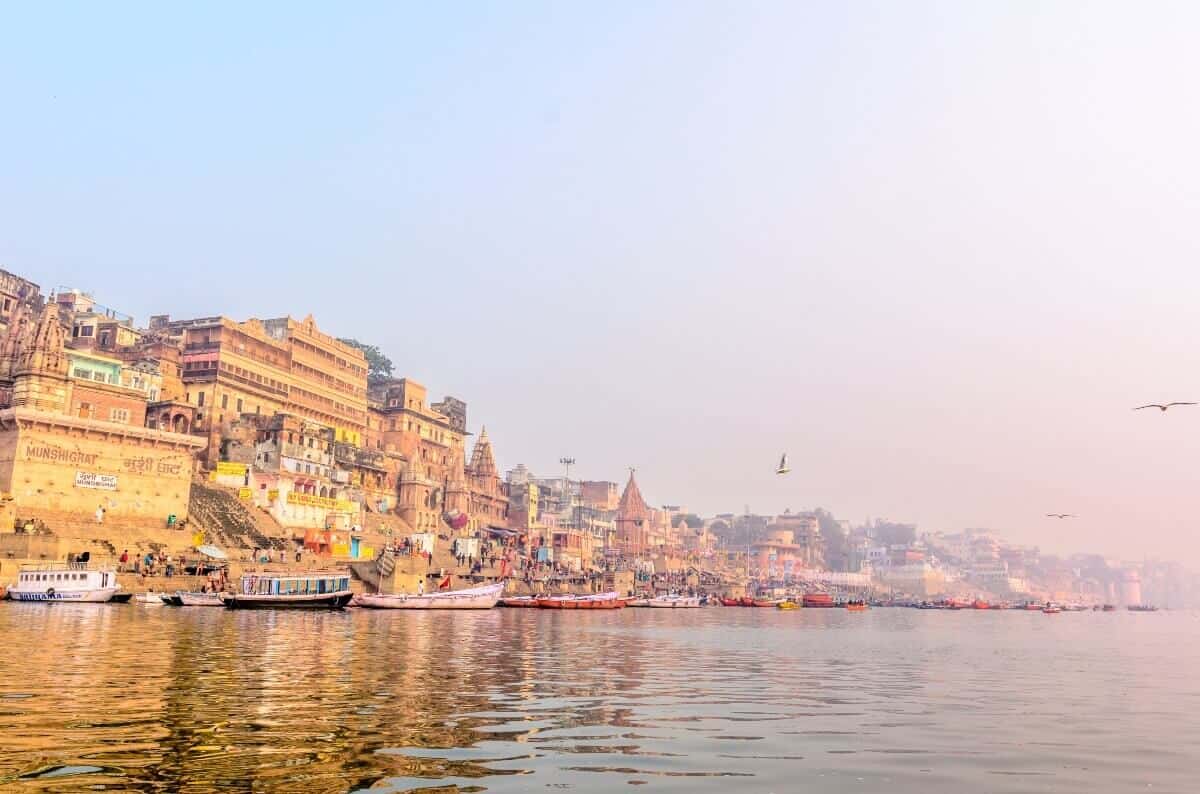
Varanasi is the oldest city in India and the most sacred to Hindus.
One of the oldest cities on earth, Varanasi is the most sacred city in India to Hindus, number one among the seven holy cities of India. Varanasi was formerly called Kashi and associated with a kingdom of the same name of 2,500 years ago, but the city may be more than 5,000 years old. Located along a unique stretch of the Ganga River – one of the only places where the 2,510 kilometre river runs in a northerly direction, rather than its usual south-easterly direction – Varanasi hums with fervour day and night.
There are 84 Ghats lining the river on the west side in Varanasi, and here is where the faithful congregate to perform pujas and take dips in the river. It is also where the cremations take place that burn day and night (at Manikarnika Ghat).
For a devout Hindu, if you die in Varanasi, and your body is cremated and then the ashes immersed into the sacred Ganga River, your soul will achieve moksha and be released from the cycle of birth-death-rebirth.
There are many myths and legends associated with Varanasi, a lot of history, ancient temples, holy sites – it’s a very busy place, layered with much meaning and significance. Plus, it’s a very cultural city known for music and silk sarees, among other things including unique and tasty street food such as tamatar ki chaat.
When to go to Varanasi
It can get very hot in Varanasi, so the ideal time to go is between October and March. Varanasi has it’s own unique Diwali celebrations, called Dev Deepavali, that take place 15 days after Diwali.
Top things to do in Varanasi
- A boat ride at dawn along the ghats.
- The spectacular evening Ganga Aarti at Dashashwamedh Ghat. You can watch from the ghat or from a boat on the river.
- Visit the Kashi Vishwanath Temple. Dedicated to Lord Shiva, it was constructed in the year 1780 by the Maratha monarch Maharani Ahilyabai Holkar. There is an entrance for foreigners.
Top tips for Varanasi.
- Some foreign visitors find Varanasi overwhelming and even disappointing. I think it’s important to remember that Varanasi is not a tourist attraction – far from it. It’s a thriving, living, sacred city and the cremation fires are not a spectacle. They should be treated with utmost respect and never photographed or filmed.
- Personally, I always stay in Assi Ghat, the end ghat that is fairly near Benares Hindu University. I like the vibe and there is an airy spaciousness because it’s at the end of the ghats. Plus the proximity to BHU means student cafes and other amenities. Assi Ghat has a sunrise Ganga Aarti that is very charming.
Where to stay in Varanasi
My favourite place to stay is a converted mansion called Ganges View Hotel in Assi Ghat. It is a charming place with a rooftop terrace, and a dining room where guests eat meals together. A few other spectacular places that capture the flavour of Varanasi include Palace on the Ganges, BrijRama Palace, Dasaswamedh Ghat, and Guleria Kothi, Dasaswamedh Ghat.
Palace on the Ganges, Assi Ghat

Haridwar
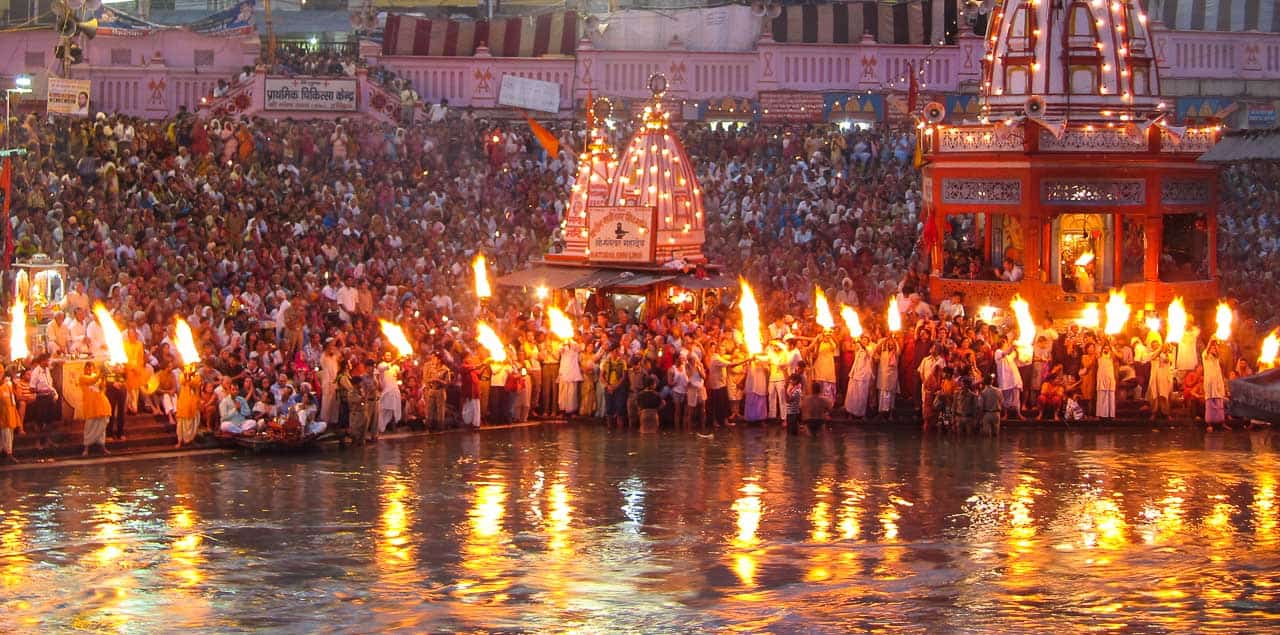
Haridwar is one of India’s seven sacred cities.
Just about a four or five hour drive north of Delhi, Haridwar is one of the seven holy cities of India, collectively known as Sapta Puri. It is the most northern of the holy cities, situated at the place when the foothills of the Himalayas (the Shivaliks) ripple to an end. Here, the sacred Ganga River leaves the mountains and enters the plains, beginning a very long journey across the length of India.
In Haridwar, the Ganga runs through a well-managed canal, overseen by a 30-metre tall statue of Lord Shiva. This is the official start of Dev Bhoomi, land of the gods, and the abode of Shiva. Har ki Pauri (which means the footsteps of Shiva in Hindi) is the sacred centre of Haridwar. According to mythology, Har ki Pauri is one of four places in India where drops of immortal nectar – known as amrit – were spilled by the celestial bird Garuda.
The massive Kumbh Mela festival – the largest spiritual gathering on earth – takes place in Haridwar, centred around Har ki Pauri, every 12 years. Hindus believe that taking a dip in the Ganga at Har ki Pauri is believed to wash away one’s sins. I wrote about my experience attending the Kumbh Mela in Haridwar in 2010.
As it is customary for Hindus to bring their deceased relative’s ashes to Haridwar, and record the visit in scrolls maintained by pandas (priests), Haridwar has become a rich source of genealogical information. Now, many people journey to Haridwar to consult these scrolls and learn about their family histories.
Aside from Har ki Pauri, there are many other important pilgrimage sites in Haridwar such as the hill-top Mansa Devi Temple. This Shakti temple is said to fullfill the wishes of earnest devotees. If your wish is fulfilled, you must return and give thanks in the way of offerings. You can reach the temple by joining crowds of pilgrims walking uphill or using a cablecar. The panoramic view alone is worth the climb.
Top things to do in Haridwar
- Attend the morning and evening Ganga Aarti in Har ki Pauri, where countless lights, candles, and diyas imbue the river with a golden glow.
- Explore the narrow lanes of Moti Bazar, piled with gleaming brassware, steaming hot jalebis, glittering religious ornaments.
Top tips for Haridwar
- Haridwar is a busy city, with a kind of seething energy that can be unsettling for newcomers. There is a lot going on in a small space! Pace yourself and save your energy for the evening aarti, which is mesmerizing.
- Try and stay on the river, and wake up at dawn for Ganga puja. Haveli Hari Ganga offers this opportunity, with their own private ghat.
Where to stay in Haridwar
Haveli Hari Ganga

Rishikesh
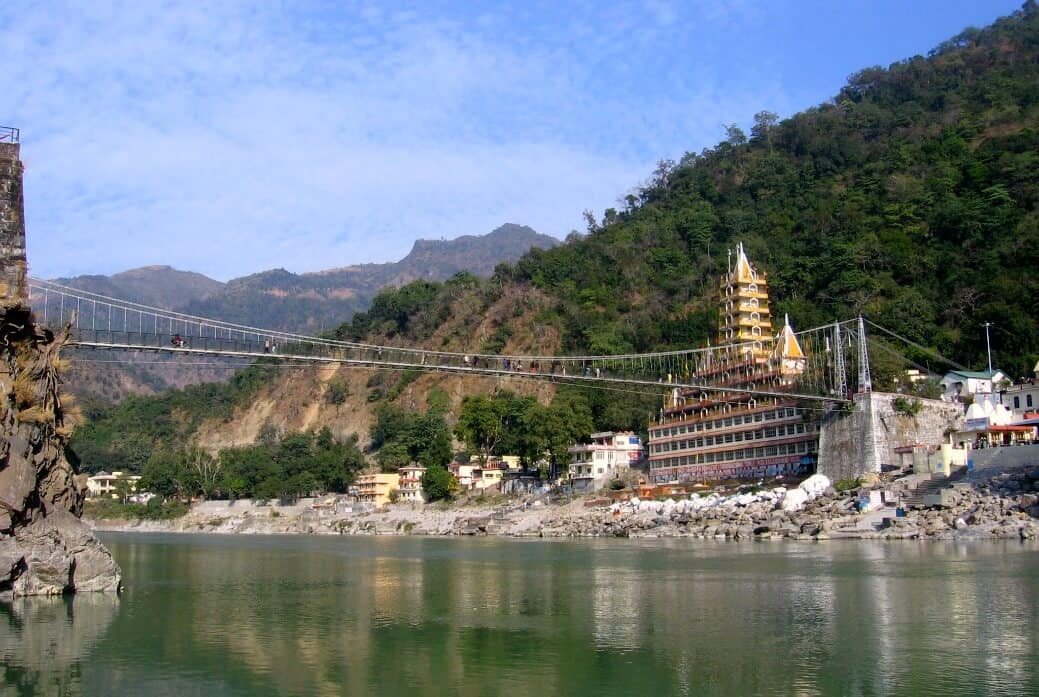
Rishikesh, the Yoga Capital of the World, runs along the banks of the Ganga River.
Rishikesh burst into western consciousness with the arrival of The Beatles in 1968. They spent a couple of months in seclusion at an ashram on a cliff above the Ganga River studying meditation. Since then, and along with the growth of the worldwide Yoga phenomenon, Rishikesh has become a beacon for Yoga students and spiritual seekers from around the world. I wrote about my connection to The Beatles Ashram in Rishikesh here.
But Rishikesh has long been a meeting place for seers, sages, and rishis (advanced spiritual practitioners). Since literally the dawn of recorded history, they have been gathering in this picturesque valley along the banks of the Ganga River to meditate, pray, and expand their spiritual consciousness. It is a hallowed place with a time-honoured tradition that extends far back in time.
Nowadays, the so-called Yoga Capital of the World has been discovered by local leisure tourists, who regard Rishikesh as the gateway to adventure. The new breed of pilgrim is intent on seeking thrills from white water rafting, rather than spiritual insights. With pilgrims and spiritual seekers jostling for space in Rishikesh among the leisure tourists who arrive in hordes on the weekend, it’s much more of an effort to find those sublime moments of peace the town was once famous for.
But still, if you go down to the river at dawn, and watch the milky mist rise above the emerald green water, and the golden sun come up slowly from behind the mountains, you can find yourself entranced by the beauty and the profound energy of the place … and sense the pulse of eternity … as always.
When to go to Rishikesh
The ideal time to go is between October and March. This is the “season” in Rishikesh, when the many Yoga schools and ashrams run training programs and retreats. In early March, the annual International Yoga Festival brings an influx of foreign teachers and students into Rishikesh.
Top things to do in Rishikesh
- Meditiate on the banks of the Ganga River.
- Join a Yoga class at dawn.
- Stay in a Yoga Ashram.
Top tips for Rishikesh
- To really enjoy Rishikesh, stay in a Yoga Ashram for a couple of weeks and immerse into the time-honoured traditions of Yoga and meditation at dawn each day, vegetarian meals, and taking part in spiritual traditions, readings, and kirtans.
- Explore beyond the town of Rishkesh, there are some walks and hikes that take you into the countryside, up to waterfalls, and to nearby temples. Or by car you can visit Vashistha Cave, Rajaji National Park, or Kunjapuri Temple at sunrise.
Where to stay in Rishikesh
Anand Prakash Yoga Ashram is my go-to Yoga ashram in Rishikesh, and always has been. When founder Yogrishi Vishvketu built the ashram in 2007, it was the only building standing in that area of Tapovan. Now it is completely hemmed in by overdevelopment, but the vibe inside the ashram is as profound and peaceful as ever. You can read more about Anand Prakash Yoga Ashram and Akhanda Yoga in these posts, or visit the ashram’s website, below:
- Guide to Yoga in India
- What life is like in a Yoga Ashram
- Interview with Yogrishi Vishvketu
- Anand Prakash Yoga Ashram website
Of course there are many, many other Yoga schools and ashrams — possibly 350 altogether — in Rishikesh to choose from. Plus, numerous guest houses, hotels, resorts, and homestays. It helps to get a personal recommendation from a friend or Yoga teacher, or to make a connection with a teacher. That is the time-honoured way. Many people arrive and look for a teacher while in Rishikesh, which is a great idea because you can try different classes and ashrams. My favourite hotel is Yog Niketan by Sanskriti because it is right on the river, across from the Shiva statue.
Yog Niketan by Sanskriti

Amritsar
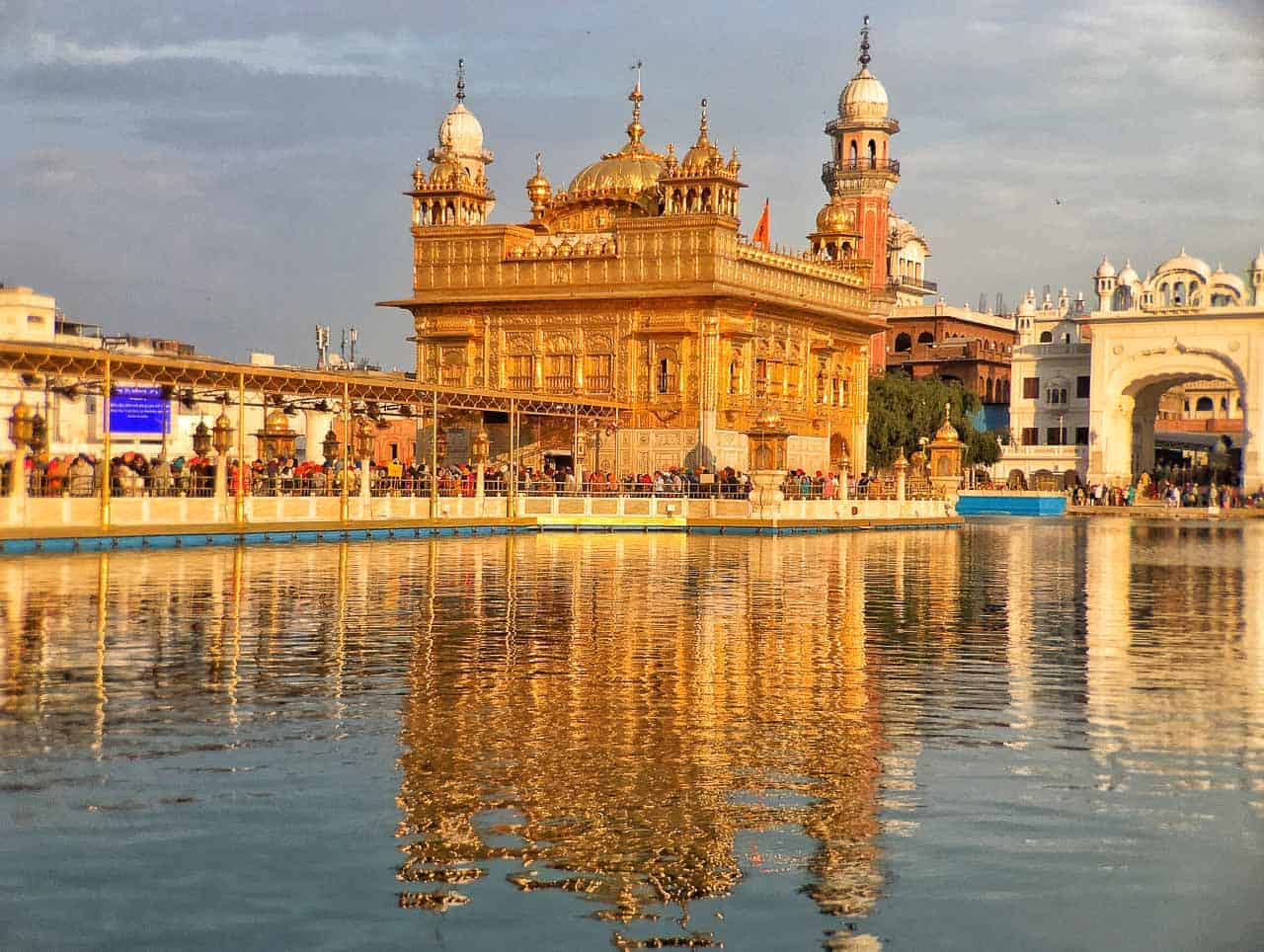
Amritsar is the home of the Golden Temple, the centre of the Sikh religion.
Amritsar is a big, busy city in the north Indian state of Punjab. It is known for its rich cuisine, its strategic role in Indian history, and for being the home of the Golden Temple. The real name of the Golden Temple is Harmandir Sahib, and this massive gurudwara is the centre of the Sikh religion.
The Golden Temple is in the heart of Amritsar, surrounded by a vast complex that includes huge kitchens, and beyond that, the main market area of the city. The kitchens are in full operation every day as the gurudwara makes food to feed up to 100,000 people a day, for free, in a practice called langar.
Visitors stream into the Golden Temple night and day to pray, dip in the huge tank, volunteer, eat the langar on offer, and absorb the profoundly peaceful vibes. Though the Golden Temple is a busy place, it manages to retain a deeply serene, spiritual atmosphere that affects people. Many visitors to India report the Golden Temple as the most spiritual destination they experienced.
From the Golden Temple, past Jallianwala Bagh, to the Town Hall, is the main market area of the city. Renovated in 2016, this market area was cleared of vehicular traffic, the building facades were redone in pinkish stone, and large sculptures and public art were added to the sweeping boulevard.
A Partition Museum opened in the Town Hall in 2017, and it’s well worth a visit to understand the effects of modern history on this region. And of course, a stop to remember the victims of the terrible massacre at Jallianwala Bagh in 1919 is essential to further understand the forces that helped shape independent India and the city of Amritsar.
When to go to Amritsar
Like most of India, it can get very hot in summer, so the ideal time to go is between October and March. The rambunctious – and fun! – Punjabi festival of Lohri takes place in mid-January and would be a good time to go. It can get quite cool from December to February, especially at night.
Top things to do in Amritsar
- Spending time in the Golden Temple is the main reason to go to Amritsar on a spiritual journey. Visit the Golden Temple, try the langur, sit meditatively by the tank, and even volunteer, if you feel so moved.
- Take a walk from the Golden towards Town Hall, stopping at Jallianwala Bagh and the Partition Museum.
- Try the local cuisine that includes many specialties such as Amritsari Fish and Chole Kulcha.
Top tips for Amritsar
- Dusk is a beautiful time to visit Golden Temple and it can be less busy than other times of the day.
- Carry a scarf or bandana with you as you will need to cover your head in the gurudwara.
Where to stay in Amritsar
WelcomHeritage Ranjitvilas

Pushkar
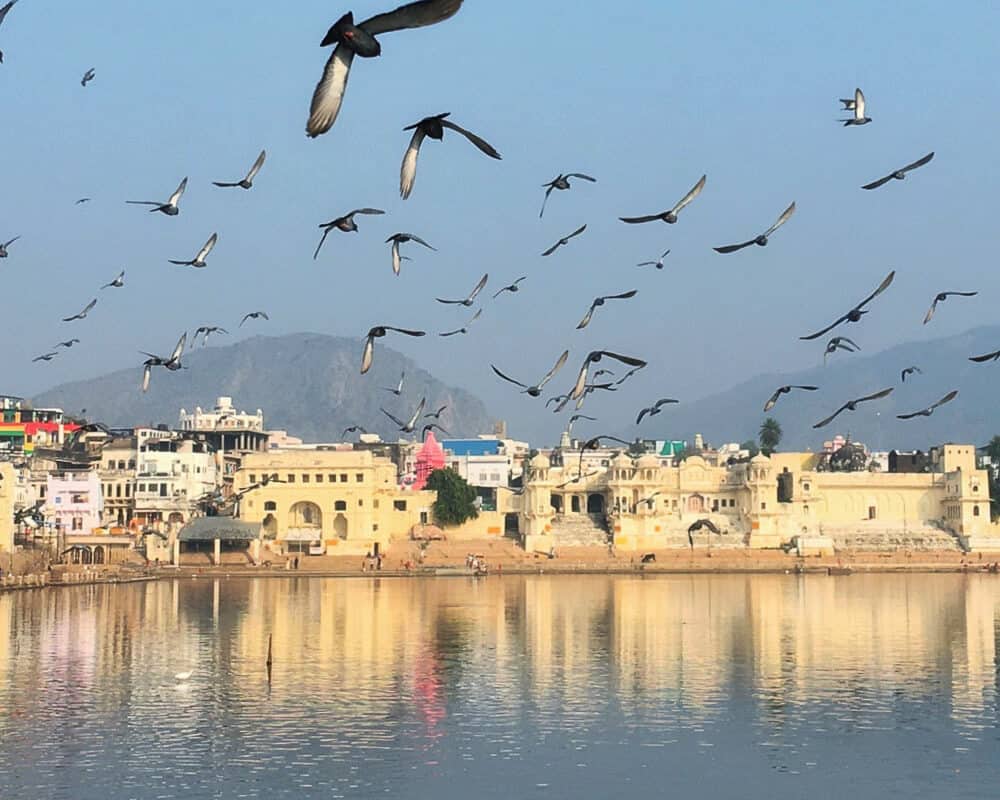
Find serenity now in the small Rajasthani town of Pushkar.
Pushkar is a very special place. A small, serene town in the Rajasthani desert between Jaipur and Jodhpur, it is famous as the site of the only Brahma Temple in India. The entire town is imbued with sanctity as the town is home to hundreds of temples and 52 ghats that encircle a small, sacred lake.
Though small in size, Pushkar is associated with many large myths and legends. It is said that Pushkar Lake was created when Brahma killed a demon with a lotus stalk. As the petals fell, they formed a lake. There are many legends about why there is only one Brahma Temple – but essentially they all come down to a curse.
Pushkar is also famous for the annual cattle fair that coincides with Kartik Purnima. At this time, Hindu pilgrims flock to Pushkar to take a dip in the sacred lake, which they believe will cleanse them of their sins. During the five days leading up to Kartik Purnima, the small town of 15,000 swells to at least 250,000.
During the Pushkar Camel Fair, Pilgrims crowd around the temples and ghats, camel sellers camp outside the city on the flat desert lands, and tourists fill the tented resorts that spring up. It’s a madhouse, with “more photographers than camels,” and fees for everything from accommodation to transportation soaring to double or triple the regular rates. I wrote about my experience at the Pushkar Camel Fair here.
Much better to visit during the regular tourist season, which is basically from October to March. As well as Hindu pilgrims, Pushkar attracts travellers and hippies, who love to meander in the long bazaar that circles the lake and hang out in the many rooftop cafes and lounges. Pushkar is definitely a place to linger.
When to go to Pushkar
It can get very hot in summer, so the ideal time to go is between October and March. Avoid the Pushkar Camel Fair in the fall.
Top things to do in Pushkar
- Arise at dawn and join the pilgrims on the ghats that circle the lake as they perform pujas and rituals, and take dips. It’s a beautiful, serene time on the lake as the sun comes up behind the hills.
- Climb 600 steps up to the Savitiri Temple at sunset for a spectacular view.
- Visit the Brahma Temple, and some of the (many) other temples in town.
- Enjoy shopping in the bazaar and hanging out in the many rooftop cafes and lounges that top guest houses and hotels throughout the town.
Top tips for Pushkar
- Avoid the Pushkar Camel Fair. The serenity of this peaceful town is completely lost during the fair.
- Be aware of the tourist scams that plague Pushkar. So-called “priests” pounce on tourists when they try and go down to the lake for the first time. They shove flowers in your hand and offer to perform a ritual – and then try to extort as much $100 USD! The best way to avoid them is to go to a temple and get the priest to tie a red string around your wrist. It’s the secret sign that says you have already “paid your dues” to the Pushkar priest mafia.
- There are other scams, too. For example, a chid will ask you to buy them some biscuits, and then they return the biscuits to the store and split the money with the storekeeper. It’s unfortunate that so many scams plague this lovely place.
Where to stay in Pushkar
Inn Seventh Heaven
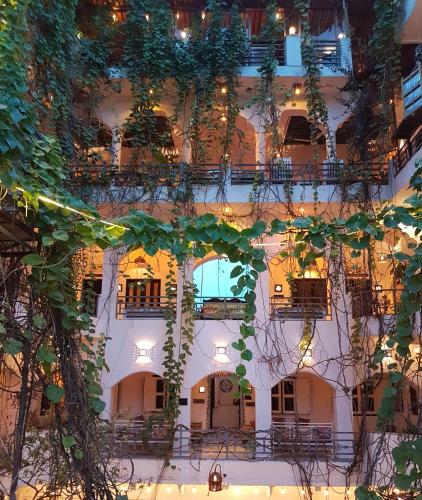
Tiruvannamalai
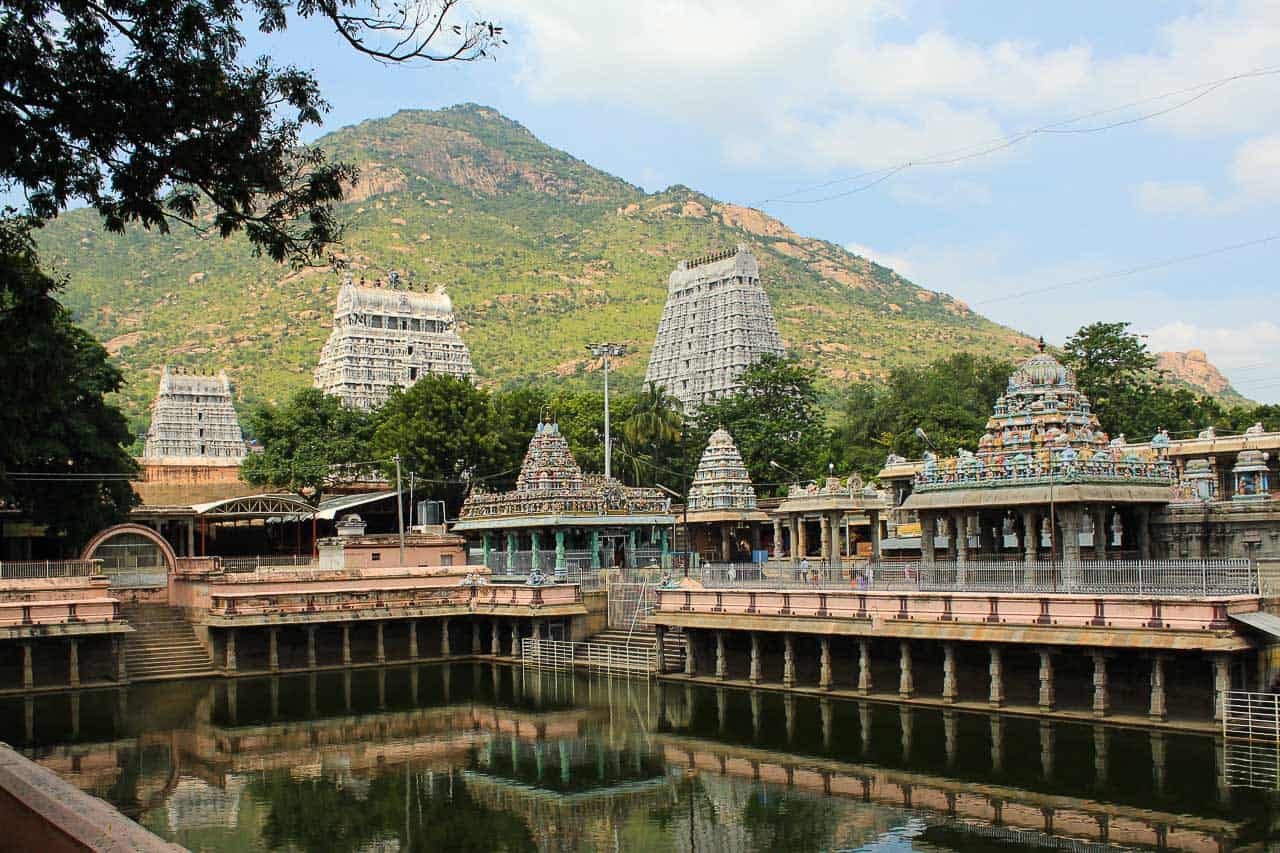
Home of the great saint Sri Ramana Maharshi.
Tiruvannamalai, a town in the South Indian state of Tamil Nadu, is well-known as a spiritual pilgrimage destination. It’s renowned primarily for three things: a significant (and grand) Shiva temple, Mount Arunachala, and Sri Ramana Maharshi.
Mount Arunachala, on the outskirts of Tiruvannamalai, overlooks the town and the Annamalaiyar Temple – which is one of the largest in India. It covers an area of 25 acres and houses one of the tallest temple towers in India.
Mount Arunachala is also the place that drew a young man who wanted to pursue a spiritual life. Sri Ramana Maharshi – who spent his entire adult life meditating in caves on the mountain, or in an ashram at its base – became one of the great saints of the 20th century, revered by all and immortalized in books such as The Razor’s Edge and A Search in Secret India. Though he died in 1950, his ashram is still operating and attracting spiritual adherents from all over the world. Many people, myself included, report they can feel his presence. I wrote about my experience in A spiritual journey to Tiruvannamalai.
Top things to do in Tiruvannamalai
- Head to Mount Arunachala and do the parikrama around the base. Walk up the mountain and visit the caves that Sri Ramana Maharshi meditated in for many year.
- Spend time at Sri Ramana Maharshi’s ashram. Sit quietly and meditate in the room he used for spiritual instruction. Everything is preserved as he left it in 1950.
- Visit the incredible the Annamalaiyar Temple, and enjoy the views of Mount Arunachala from the temple.
Dharamsala
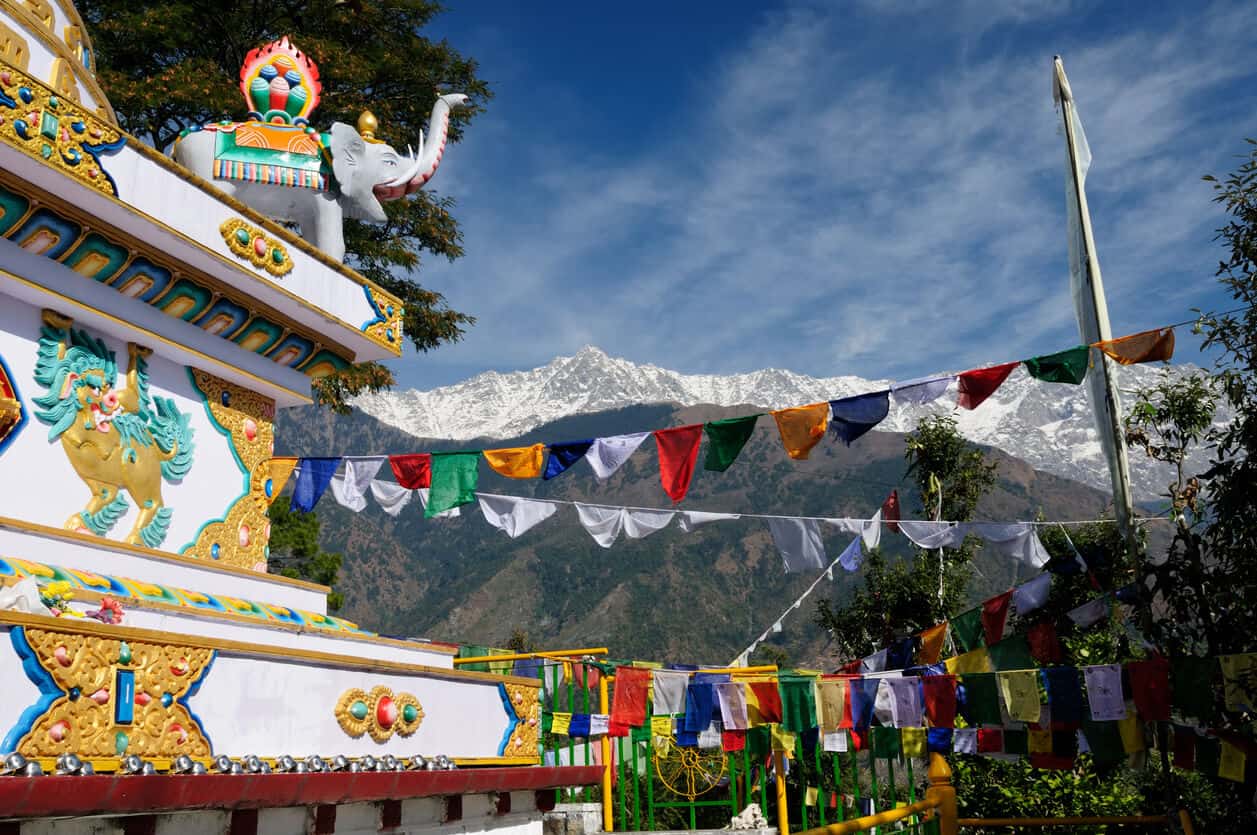
In the Himalayas with the Dalai Lama.
In 1959, a young monk made a daring and dangerous escape from Tibet as the occupying Chinese forces pursued him. He crossed the Himalayas and found his way to India, and eventually to Dharamsala. This was how the Dalai Lama ended up in India, setting up his home and the Tibet government-in-exile in a small town among the Himalayan mountains of Himachal Pradesh.
Today, Dharamsala (and the suburb of McLeod Ganj) remain his home and a stronghold of Tibetan culture. People come from all over the world to receive the teachings of His Holiness, to learn about Buddhism, to meditate, and to enjoy the peace and beauty of the surrounding region.
McLeod Ganj / Dharamsala has become a spiritual hub for many seekers. There are lots of opportunities to study Yoga, practice meditation and music, to take Ayurveda treatments, do a 10-day silent Vipassana retreat, and go for hikes among the mountains. Read my Travel Guide to Dharamsala to learn more. You can also learn about Tibetan culture at places such as The Norbulingka Institute.
Top things to do in Dharamsala
- Visit Tsuglagkhang, the Dalai Lama Temple complex (which includes the Tibet museum), to gain insight into Tibetan culture and spirituality.
- Schedule your visit to coincide with the Dalai Lama’s teachings, you can find his schedule here.
- Trek to Bhagsu and Dharamkot villages, and beyond, for spectacular views of the mountains.
Kasar Devi
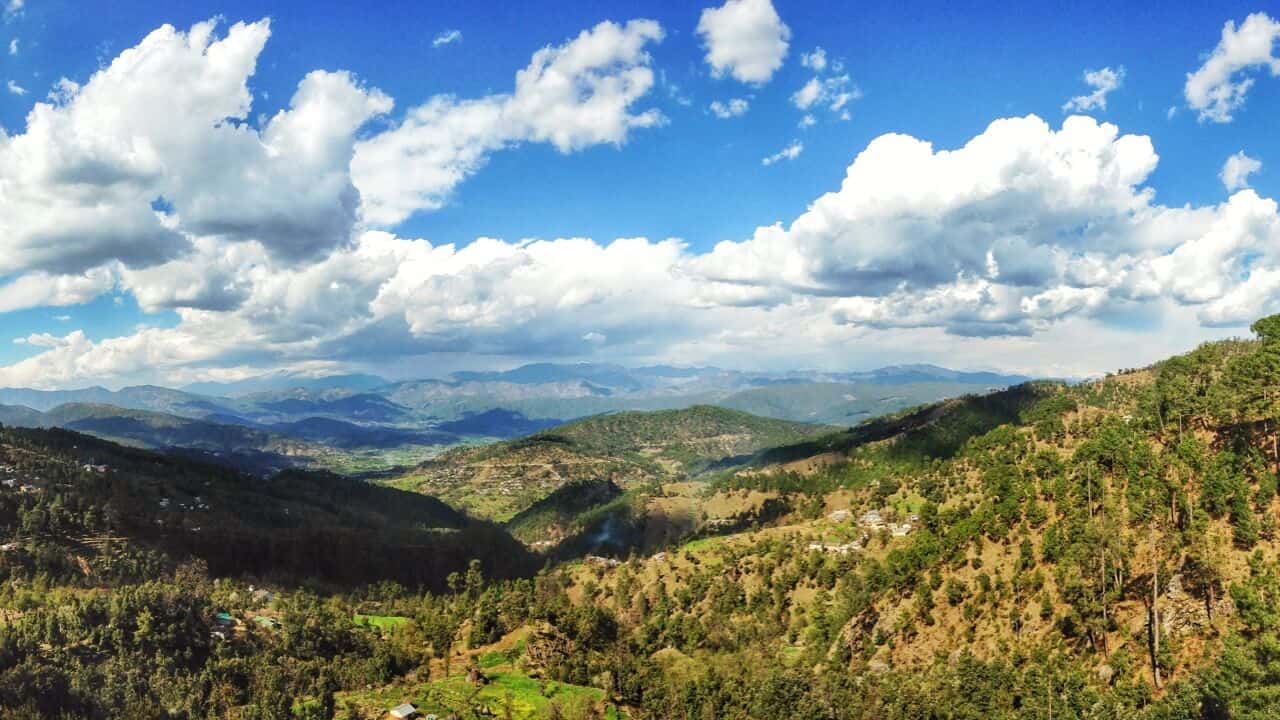
The spiritual magnetism of Kasar Devi is based on scientific fact.
A small village in the Almora district of Kumaon, in the north Indian state of Uttarakhand, Kasar Devi is a spiritual magnet. For generations, artists, philosophers, mystics, and spiritual seekers have been drawn to this isolated spot with breathtaking views of the Himalayas. Notable names include Allen Ginsburg, D.H. Lawrence, George Harrison, Cat Stevens, and Bob Dylan.
This magnetic pull is actually based in scientific fact. According to NASA, the earth is surrounded by radiation belts – called Van Allen Belts – and apparently there are three places on earth under the impact of these highly energetically charged zones: Kasar Devi, Machu Pichhu, and Stonehenge. Meditators are drawn to Kasar Devi because of the high density of the geomagnetic field.
Kasar Devi takes its name from an ancient Hindu temple that is dedicated to Kasar Devi, a form of Goddess Durga. The temple dates back to the 2nd century and is a lovely place to hike to and explore. The area around Kasar Devi Temple is known as Hippie Hill or Crank’s Ridge. It extends about six kilometres among the lower Himalayas.
Note: while traveling in Kumaon, you can also make a stop at the Neem Karoli Baba ashram, about 40 kilometres away at Kainchi Dham. This ashram has drawn many western devotees from celebrities to tech geniuses – most notably Steve Jobs (Apple), Mark Zuckerberg (Facebook), and Larry Page (Google).
Top things to do in Kasar Devi
- Hike to the Kasar Devi temple, enjoy the views, relax and chill. There’s not much to do in Kasar Devi.
Vrindavan / Mathura
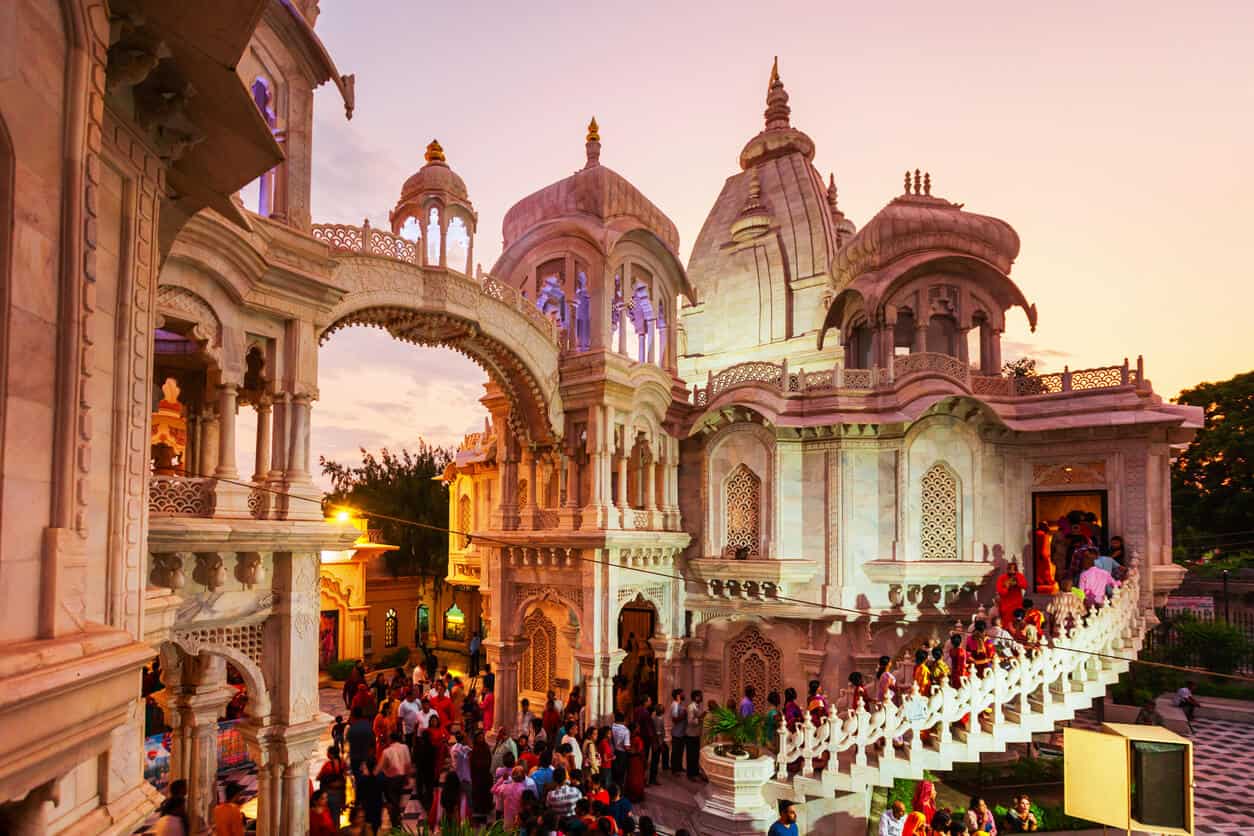
Birthplace and playground of the beloved god Krishna.
According to myth, the playful Hindu god Krishna, beloved in India, was born in Mathura and grew up in nearby Vrindavan (now in the state of Uttar Pradesh). Many images depict the cherubic god cavorting with gopis (female cow herders) in verdant meadows and thick forests, or by the banks of the fast flowing Yamuna River.
If you have these bucolic images in your mind when you travel to Vrindavan / Mathura, you will be sorely disappointed. These cities, on the baking hot plains, are dry, dusty, and highly developed. However, they are full of temples, ashrams, and other sacred sites associated with Krishna, and they come alive on festivals such as Krishna Janmashtami and Holi.
The Krishna Balaram Mandir temple is one of the main attractions in Vrindavan. It’s the centre of the ISKCON (International Society of Krishna Consciousness) organization. Yes, these are the bhakti yogis known as the Hare Krishnas, because they sing and chant Hare Krishna.
When I stayed in Vrindavan to do research for The Mirabai Expedition, I ate every meal at Govinda’s, the vegetarian restaurant at the Krishna Balaram Mandir temple. The food is outstanding! For me, finding the tiny Mirabai Temple in Vrindavan was the highlight of my stay. The 16th century saint-mystic-poet was an ardent follower of Krishna and lived in Vrindavan for many years.
Top things to do in Vrindavan / Mathura
- Vrindavan Parikrama is one of the most popular spiritual activities. It involves walking in a 13 kilometre circle around Vrindavan, starting and ending in the same place.
- Kirtan at ISKCON is not to be missed. It goes on for 24 hours per day, and has been happening continually since 1986.
Bodh Gaya
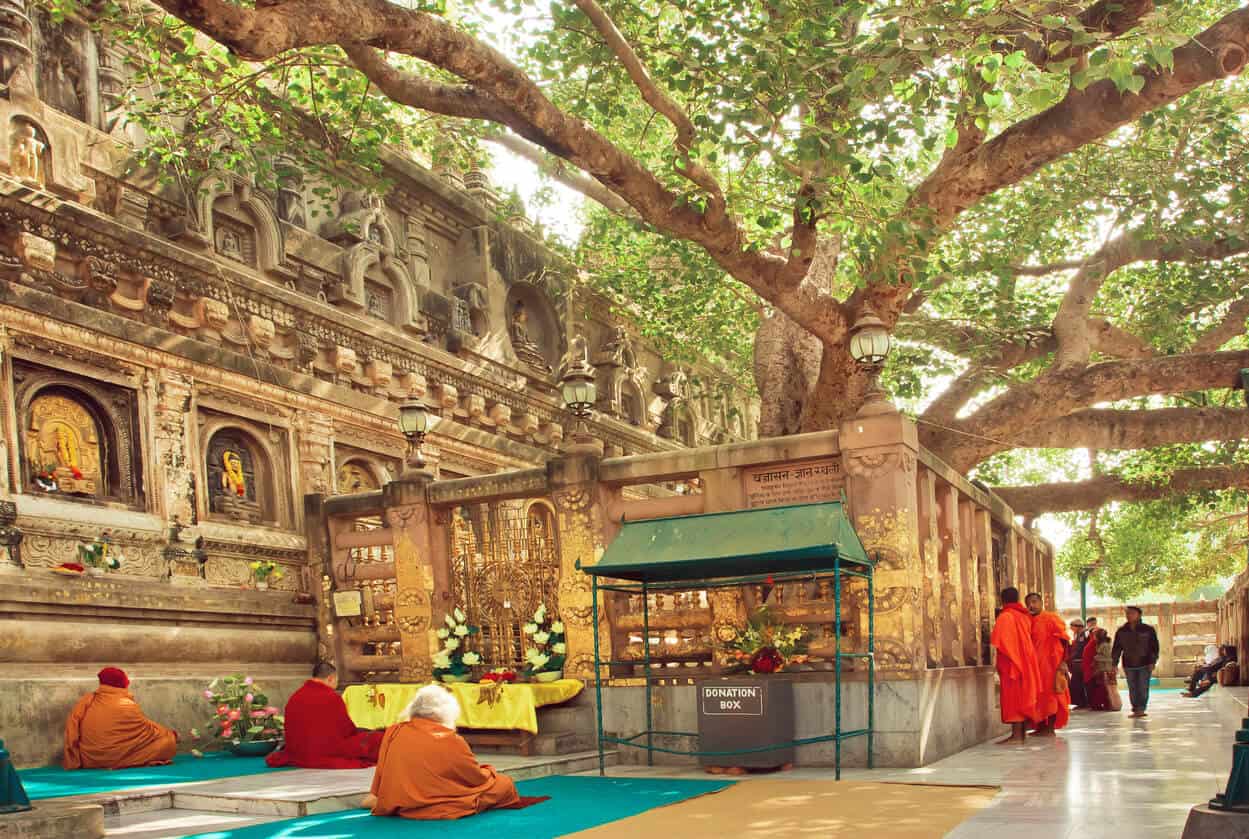
Where the Buddha achieved enlightenment
The Buddha was born Siddhartha Gautama in approximately 563 B.C. He was a prince, born into wealth and privilege, who renounced his position to wander and meditate. After some time, he decided to sit under a bodhi tree to meditate until he attained enlightenment and understood both the causes of suffering and how to be released from it.
It was under the bodhi tree at Bodh Gaya – in the present state of Bihar – that Siddhartha Gautama became the Buddha, the “Awakened One.” The current bodhi tree, found inside the UNESCO World Heritage Mahabodhi Temple complex, is not the original tree, which sadly died. However, it was grown from a cutting related to the original tree.
For Buddhists, Bodh Gaya is the most important of Buddhism’s four holiest sites. Students, pilgrims, and meditators flock to Bodh Gaya from all over the world, and many monasteries and temples have been built nearby, representing various cultures from around the world. There are many courses available in Bodh Gaya for those who want to learn more about Buddhism and meditation.
Top things to do in Bodh Gaya
- Visit the Mahabodhi Temple and sit in meditation under the Bodhi Tree.
- Explore the other beautiful temples in Bodh Gaya such as the Thai Temple, Bhutanese Monastery Tibetan Karma Temple, and Japanese Indosan Nipponji Temple.
If you enjoyed this post, you can.
Sign up for Dispatches in the sidebar and follow Breathedreamgo on all social media platforms including Instagram, Facebook, Pinterest, and Twitter. Thank you!


